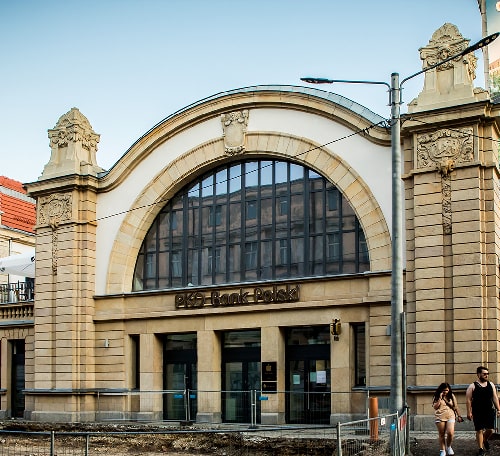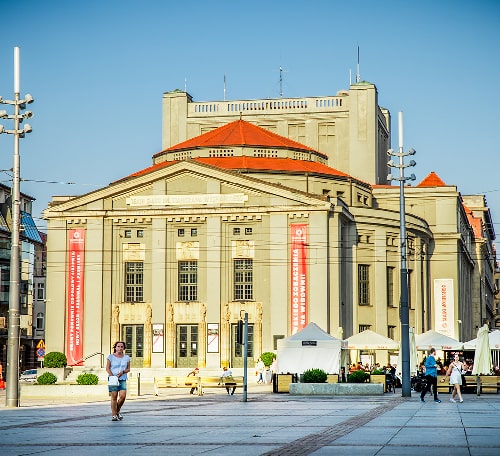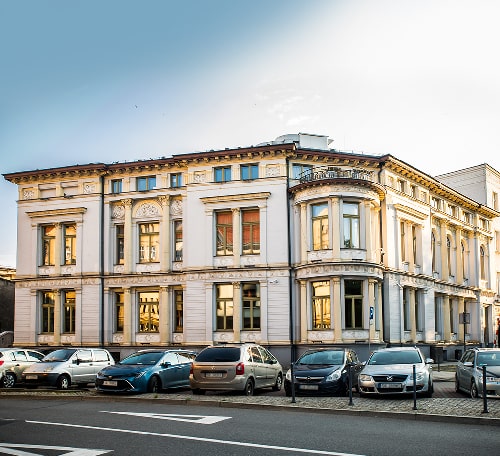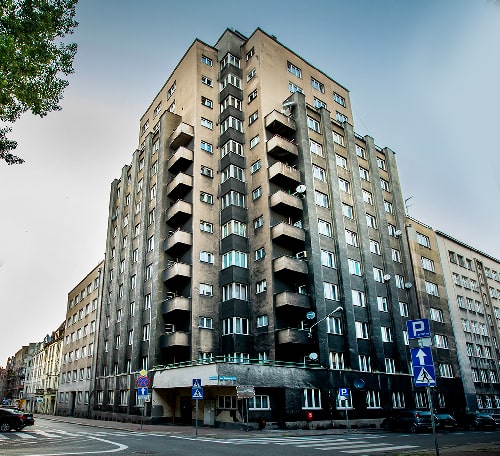
Katowice Historic Railway Station
As you step out of the Hotel Plaza Katowice, your eyes are met with a glimpse of the old railway station. This low, oblong building has a rich history as a hub for travelers from the mid-nineteenth century up until 1972. Today, it's privately owned and boasts a beautiful neoclassical form, which was acquired during a thorough reconstruction in the early 20th century. You'll notice that the main waiting room has a similar architectural style to the Old Central Station in Seoul. It's definitely worth taking a closer look!

The Stanisław Wyspiański Theatre
The Stanisław Wyspiański Theater is an impressive landmark in Upper Silesia. Since it was built in 1907, it has been the go-to place for theater lovers in the region. The neoclassical building is grand and imposing, and the figures of Apollo and the Muses adorning the facade only add to its majestic appearance. Inside, you'll find a spacious auditorium where a variety of performances take place. The theater is a cultural hub in Upper Silesia and its rich history and artistic heritage make it a popular destination for tourists from all over Poland.

The Tenement House at 3rd May Street 17
This tenement house serves as a striking representation of the Art Nouveau architectural style that was prevalent at the beginning of the 20th century. Built in 1904, it showcases the unique and ornate characteristics of this design movement through its intricately decorated façade, which is adorned with glazed tiles. One of the most striking elements of the building is the irregular arrangement of balconies that line the façade, adding an element of asymmetry and visual interest to the overall design. This building is a must-see for those interested in the Art Nouveau style.

Plac Wolności
Plac Wolności in Katowice was once the crown jewel of the city's bustling main thoroughfare, ul. May 3rd. As a highly sought-after location, it quickly became surrounded by opulent tenement houses, home to the city's affluent residents seeking a prestigious address. The area exuded a sense of prestige and grandeur, reflecting the prosperity and status of its inhabitants. Today, it continues to be a symbol of the city's rich history and cultural heritage, attracting visitors from all over to admire its architectural beauty and soak up its unique atmosphere.

The Goldstein Palace
The Goldstein Palace was constructed in 1872 on Matejki Street in Katowice. The brothers Abraham and Józef Goldstein, who were wealthy industrialists, built the palace. They originally came from the Russian partition and started by trading timber to supply nearby mines. Later, they expanded into land trading and building luxury homes. In 1893, the brothers surprisingly left the Upper Silesia region and moved to Wrocław. Today, the ballroom of the palace is used as a wedding hall by the Katowice Registry Office.

Skyscraper
The iconic Drapacz Chmur (Skyscraper) in Katowice was completed in 1934, and at that time it was the tallest building in Poland, and one of the tallest in Europe. The building was constructed using an innovative skeletal technology, using steel skeletons, which made it a symbol of the reborn Polish statehood in Upper Silesia. With 14 floors above ground and 3 below ground, it was considered almost impossible to achieve at the time. The building was equipped with three elevators and it had a telephone exchange inside the building.

The Garrison Church
The Garrison Church, built in 1932, was constructed for the 23rd Infantry Division stationed in Katowice. It is considered the first functionalist religious building in Poland. The austere façade of the church is inspired by the Dutch architectural trend of De Stijl, which was popular at the time. The interior of the church, which is in the Art Déco style, has been preserved almost intact. A notable feature of the church is the image of Christ on the main altar. This image, which is in keeping with the spirit of the era, depicts a proud and upright figure looking towards the future.

The Kinoteatr Rilato
The Kinoteatr Rialto opened its doors in 1913, and it was considered a very exclusive establishment. It featured an excellent restaurant on the first floor, a cigar room, and a space for a small orchestra of around a dozen musicians. A visit to this cinema today is like a trip back in time. Visitors can sit at café tables, and in the middle of the cinema hall, there is a bar that serves excellent tea served in porcelain jugs. The cinema also shows classic films, which are considered real gems. If you have an evening to spare, visiting the Rialto Cinema Theater is a must.
